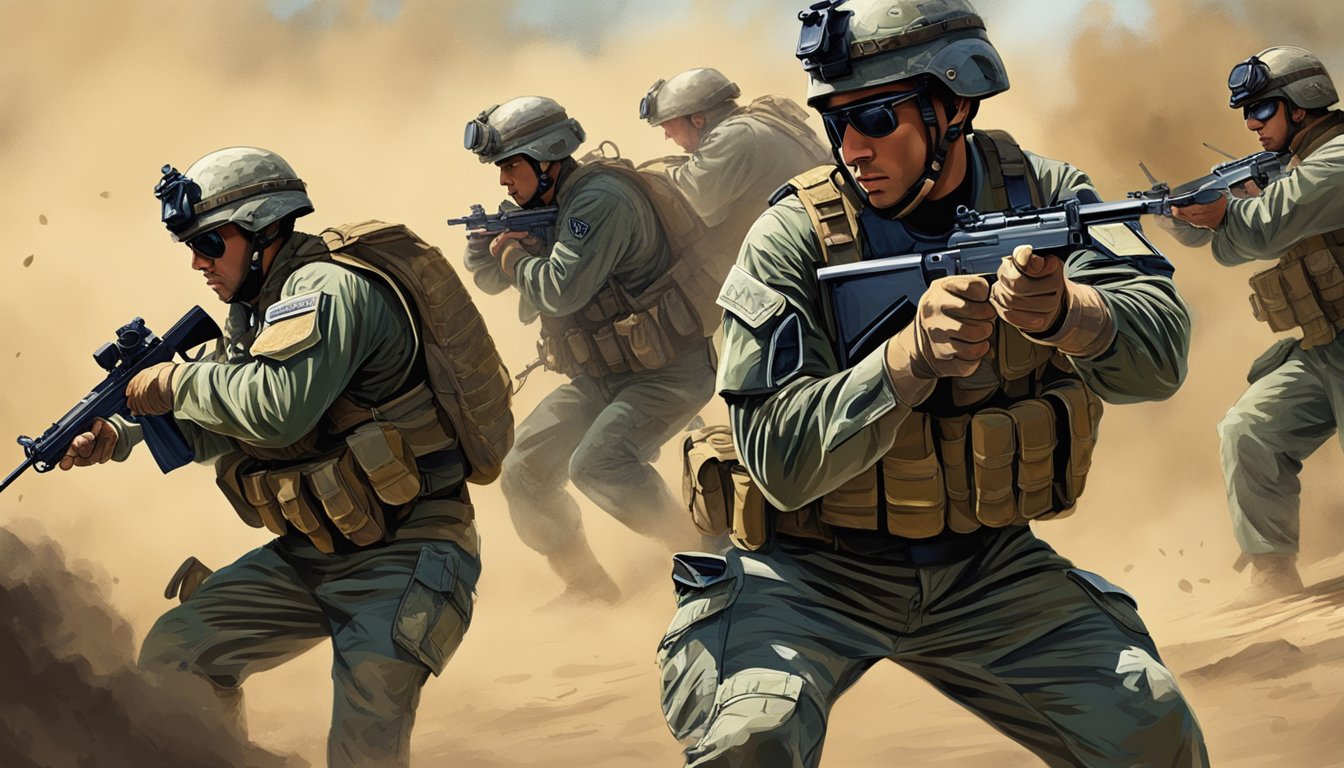From the moment they arrive for selection, Army Rangers undergo rigorous hand-to-hand combat training that continues throughout their careers.
This training is central to their elite status and is emphasized by seasoned instructors in the field.
Training at Fort Benning
On June 5, at Fort Benning, Georgia, two soldiers from the 2nd Battalion, 75th Ranger Regiment, Sgt. Robert Love and Spc.
Alexander Van Meter, were honing their skills in combatives as they prepared for the challenging USASOC Best Warrior Competition, which highlights the abilities of Special Operations forces.
Reflecting on his journey, Sgt. 1st Class Michael Meegan shared a pivotal moment from his early days in the Ranger Assessment and Selection Program (RASP) back in 2010.
As a relatively inexperienced private, he found himself immediately thrust into a training exercise.
During this drill, a fellow trainee wore a specialized suit designed to absorb blows safely, yet Meegan still managed to knock him out, demonstrating that protective gear has its limits.
After that incident, he was assigned the suit—and it became clear that he would learn quickly what it felt like to be on the receiving end of intense practice as his peers struck back during subsequent sessions.
Early lessons like this one underscored the importance of mental resilience in hand-to-hand combat.
The Ranger cadre encouraged trainees to embrace aggression and determination, creating a charged atmosphere where every encounter felt like a fight for survival.
Meegan harnessed that energy, allowing it to fuel his performance and drive.
Understanding Combat Techniques
That foundational lesson set the stage for Meegan’s remarkable twelve-year career in the 75th Ranger Regiment, during which he completed six deployments and emerged as a respected hand-to-hand combat trainer.
Interestingly, he noted that while the training is intense, the ultimate goal of a Ranger is to avoid physical confrontations.
Engaging in actual combat often signifies a breakdown in tactical execution.
Before they officially become Rangers, soldiers participate in basic training that introduces them to hand-to-hand combat through the Modern Army Combatives Program (MACP).
This program teaches grappling techniques and self-defense, allowing soldiers to progress through various levels of proficiency.
Once in RASP, recruits delve deeper with advanced hand-to-hand combat tactics, including the notorious “sandbag circle of woe,” based at Fort Moore’s Cole Range.
Under the guidance of renowned Brazilian Jiu-Jitsu champion Staff Sergeant Pedro Lacerda, Meegan refined his skills, focusing on tactical efficiency and physical readiness.
Lacerda’s emphasis on positioning and grip shaped Meegan’s training approach, pushing the limits of their physical endurance under the heat of the Georgia sun.
Mistakes during training come with consequences—in the form of demanding sprints into the woods.
This system of accountability instilled the critical importance of focus and discipline.
The Special Operations Combatives Program
As Rangers progress through RASP, they transition into the second phase, where they learn about the Special Operations Combatives Program (SOCP), which has been a standard across Army special operations since its inception on March 23, 2010.
This program combines traditional combat techniques with the strategic use of personal weapons, such as rifles and pistols, empowering soldiers to exploit hand-to-hand techniques for advantageous situations during operations.
A crucial aspect of SOCP is training in full combat gear.
Soldiers transition from basic workout attire to fully tactical uniforms, equipped as they would be in real scenarios.
Practice scenarios include numerous settings, from one-on-one encounters to dealing with multiple attackers and various detainee reactions, whether compliant or resistant.
Even once posted to a Ranger Battalion, the commitment to combatives training remains.
Individual platoons actively participate in practice sessions, with Meegan recalling his dedication as a gun team leader, where he ensured his team engaged in grappling and boxing drills at least twice weekly.
Large-scale operational training, including direct action raids, integrates hand-to-hand combat exercises into the overall strategy.
As Rangers rise through the ranks, they have the opportunity for specialized combat training programs.
Meegan took part in a rigorous six-day course tailor-made for special operations personnel.
Participants returning from this immersive experience often exuded newfound confidence and a commanding presence.
The course involved realistic simulations using paint rounds and training knives.
Meegan described the challenging nature of the exercises, where injuries were frequent yet did not overshadow the core tactical principles being reinforced.
According to him, mastering positioning and creating advantageous angles is vital, training both the body and mind for effective execution in combat situations.
Source: Taskandpurpose.com

